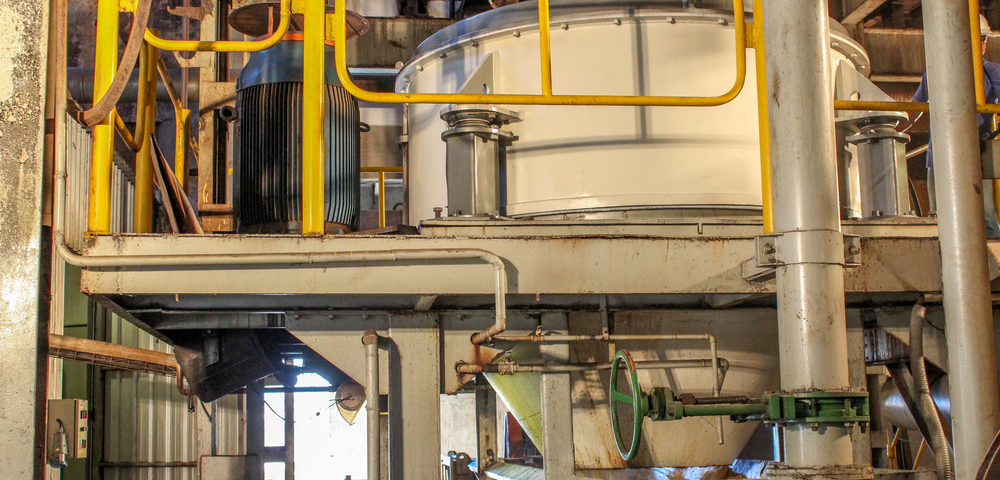In this blog, we discuss crystallization and drying in sugar proessing. In Part 1 of this blog series we discussed juice extraction, clarification, and concentration as it relates to the production of sugar from sugar cane.
Crystallization
The syrup produced in the evaporators proceeds to vacuum pans, where it undergoes further evaporation under vacuum to achieve a state of supersaturation. Fine seed crystals of sugar are then added to initiate the crystallization process, which is carried out in three stages.
The first crystallization, or A strike, yields crystallized sugar and a residual mother liquor known as A molasses. This is further concentrated to yield a B strike with a corresponding lower grade B molasses. The process is repeated a third time to produce C sugar and the final molasses, called blackstrap. The sugar content of blackstrap is too low to be economically viable for further crystallization.
Centrifugation and Drying
Basket type centrifuges are used to separate the sugar crystals and mother liquor from each stage of crystallization. Batch centrifugation is preferred for A sugars to reduce crystal breakage,which is common in continuous centrifuges. Continuous centrifugation can be used for B and C sugars.
During centrifugation, the mother liquor is separated from the sugar crystals. The crystals are then sprayed with a fine jet of water to remove most of the syrup coating and produce raw sugar of high purity.
Raw sugar from the centrifuges contains 97-99 percent sucrose. It has a golden color from a thin film of molasses covering the sugar crystals. It is then deposited on conveyor belts, where it cools anddries on its way to the storage facility.
The final moisture content of raw sugar is typically 0.5 percent. It can be stored in bags or in bulk. It is often shipped loose, like grain, in cargo ships or freight trains to sugar refineries around the world.
Read our third blog in this series – “Sugar Processing from Cane Part 3 – Refining”.
